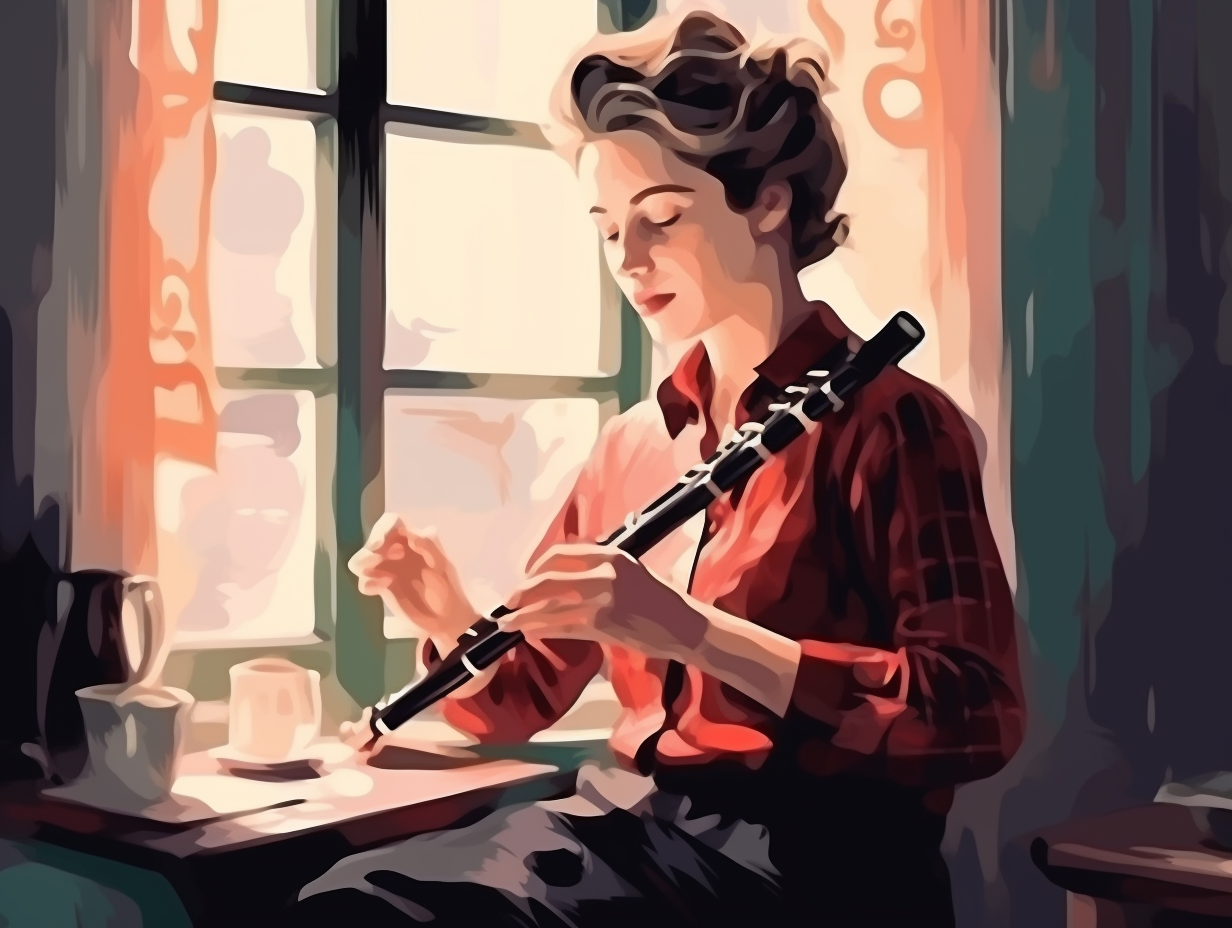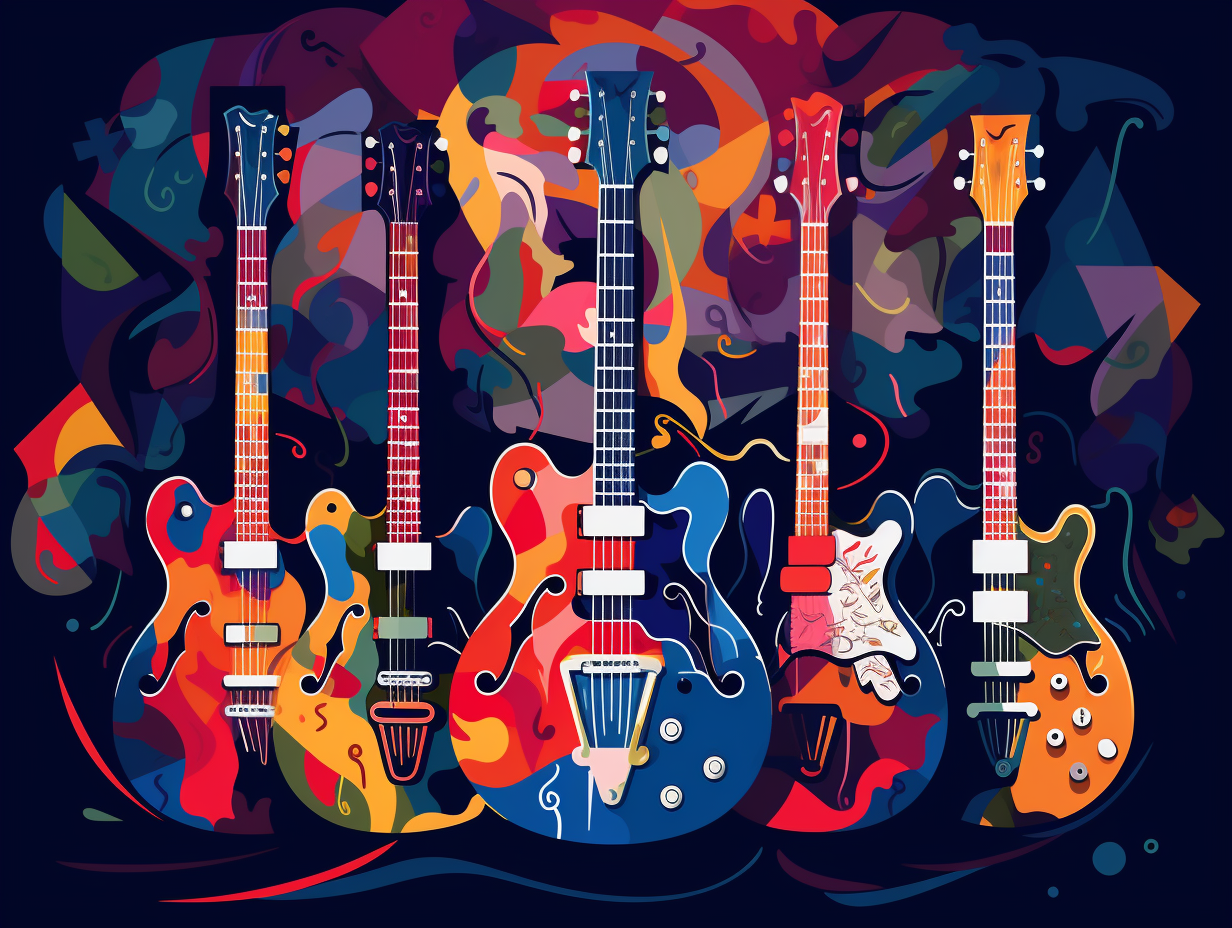10 Amazing Oboe Fun Facts: Discover the Unexpected Joys of This Magical Instrument

1. Oboe d'amore: The Baroque Heartthrob
If modern dating apps were around in the Baroque era, the oboe d'amore would certainly have made a swoon-worthy profile: boasting a pear-shaped bell and enchanting lower notes that would leave you weak in the knees. But seriously: this alluring instrument, which has fallen out of favor but made a comeback in the 19th century, ranges from G-sharp below middle C to C-sharp above the treble clef and can be heard in masterpieces by Debussy, Ravel, and other composers.
Source => en.wikiversity.org
2. Tickling the Reed: Oboists' DIY Tradition
Tickling the reed: a melodious rite of passage for oboe players who prefer their accompaniments bespoke. Instead of purchasing pre-made oboe honkers, they become artisans of their own, carefully crafting, shaving, and soaking their precious cane-made musical mustaches to ensure the perfect pitch: The creation of a personalized oboe reed involves meticulously splitting and shaving a piece of cane, attaching it to the oboe, and hydrating it for an optimal 2 to 3 minutes, while avoiding over-soaking and gently rotating when cleaning to prevent any damage.
Source => yamaha.com

Did you know that the mysterious "Neanderthal flutes" might actually be the result of hyenas munching on cave bear bones? Discover the fascinating story behind these ancient "instruments"!
=> Fun Facts about The-Flute
3. Oboe's Evolution: From Training Wheels to Stardom
Before the oboe became the powerhouse of the orchestra, it was testing the waters with its "training wheel" keys, much like a shy child at their first dance recital: In its early years, the oboe only had two or three keys, limiting its capability to play all semitones. However, over time, it evolved into possessing up to 22 keys by the end of the 18th century, finally letting it hit all the right notes. The French conservatoire style emerged in the late 1800s and gained popularity thanks to the influence of composer Richard Strauss, giving the oboe the star quality it deserved.
Source => yamaha.com
4. The Enigmatic OBOE-vercomer
They say you can't teach an old dog new tricks, but perhaps you can teach it to OBOE-vercome the hurdles of mastering this enigmatic instrument: The oboe, notorious for being tough to play yet irresistibly graceful in sound, titillates the senses with its double reed and mouthpiece combo, offering a dazzling range of expressivity, and securing its prestigious status in classical music.
Source => test.woodwind.org

5. Oboists' Mind-Bending Circle of Breath
Forget needing gills, oboists are like musical fish out of water with their mind-bending circle of life (and breath): Oboists can master circular breathing, allowing them to continuously play notes without pause, by retraining their brains to inhale and exhale simultaneously, a process that can take over a year to refine.
Source => banddirector.com
6. Rockin' Reedy: Oboe's Pop Music Invasion
Hold on to your cor anglais and prepare for an oboe invasion: This classical woodwind instrument has featured in popular music hits, gracing the tracks of Paul McCartney, The Stereophonics, and George Martin – from McCartney's We All Stand Together and Golden Earth Girl, to The Stereophonics' rendition of Handbags and Gladrags, and even in the arrangements of Flaming Pie and Ecce Cor Meum. What can we say? The oboe rocks, in its own reedy way.
Source => paulmccartneyafterthebeatles.com
7. Master Oboe Artisans: Reed-Making Royalty
Calling all master oboe artisans: your time to shine is here, for you are a crucial secret ingredient in the world of oboe reed-making! Unbeknownst to many, you wield the power to craft the delicate mystique of an oboist's serenades: The oboist hand-makes each reed from a dried cane, dedicating up to an hour of unwavering focus to achieve the perfect harmony of firmness and zest. Watch them split, gouge, shape, and carve their way to musical mastery with patience and precision!
Source => craftsmanship.net
8. A French Soirée: Oboe's Stylish Makeover
Once upon a 17th-century French soirée, the oboe sashayed into the room leaving a trail of melodious charm – oh, and Dutch instrument makers feverishly scribbling notes: Today's oboes have evolved from using materials like boxwood, ebony, and ivory to commonly crafting with grenadilla wood – a dense and durable favorite among modern musicians since the late 1800s.
Source => rijksmuseum.nl
9. Hand-Finished vs. Mass-Produced: Reed-iculous Showdown
When the going gets reed-iculous: Hand-finished oboe reeds outperform their mass-produced counterparts by providing better intonation and stability for musicians, as they're tailored to the individual oboist's needs and desired tone, and often measure between 69 to 73 mm in length for optimal sound emission.
Source => medinareeds.es

10. The Oboe: Pied Piper of the Orchestra
Behold the oboe, the pipe whisperer, the pied piper of the orchestra, a woodwind wizard that harmoniously hypnotizes an ensemble of musical minions: As the maestro of tuning, the first oboist plays the almighty "A" note, summoning a symphony of strings and brass into pitch-perfect alignment, establishing its crucial dominance in the orchestral kingdom.
Source => orsymphony.org
Related Fun Facts




















